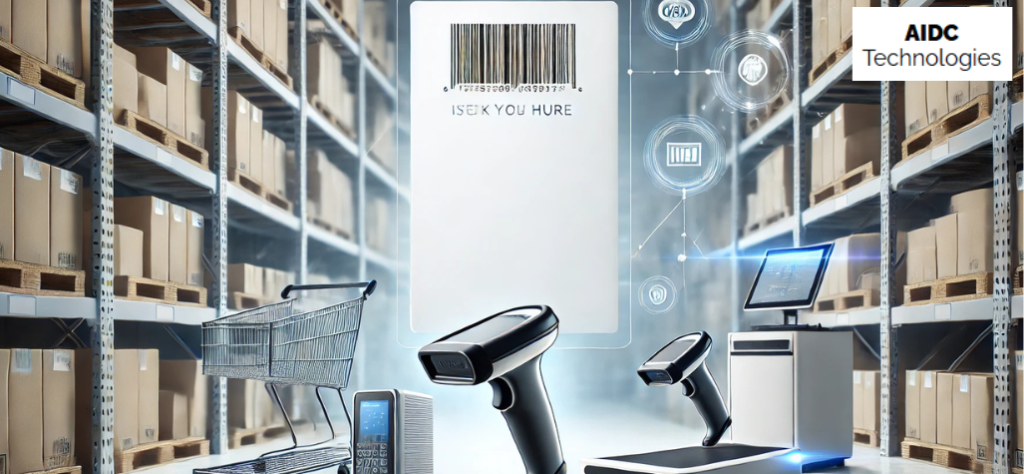
Barcode scanners have become indispensable tools across industries, enabling businesses to streamline operations, improve accuracy, and save time. This blog delves into barcode scanners' definitions, uses, and the underlying technology that powers them. Whether you're a retailer, warehouse manager, or tech enthusiast, this comprehensive guide will help you understand barcode scanners and their significance.
Table of Contents
ToggleWhat Are Barcode Scanners?
At their core, barcode scanners are electronic devices designed to read and decode barcodes. A barcode is a machine-readable representation of data, typically used to store information like product details, pricing, and inventory codes. Barcode scanners translate these codes into readable text, which is then sent to a connected system for processing.
Barcode scanners have revolutionized industries by replacing manual data entry methods, reducing errors, and accelerating workflows. With advancements in technology, these devices now come in various forms to meet specific needs.
Types of Barcode Scanners
- Handheld Barcode Scanners
Handheld scanners are portable devices designed for manual use. Users aim the scanner at the barcode, and the device reads the data. These are ideal for retail checkouts, inventory management, and small-scale operations. - Fixed-Mount Barcode Scanners
These scanners are stationary and mounted in specific locations. They are commonly used in assembly lines, warehouses, and kiosks. Fixed-mount scanners automatically scan items as they pass through the device’s field of vision. - Pen-Style Barcode Scanners
Pen-style scanners resemble a pen and require users to drag the tip across the barcode. While they are inexpensive, their manual operation makes them less efficient compared to modern scanners. - Laser Barcode Scanners
Laser scanners use a laser beam to read barcodes. They offer high accuracy and can read barcodes from a greater distance, making them suitable for large retail stores and warehouses. - CCD Barcode Scanners
Charge-coupled device (CCD) scanners use an array of tiny sensors to capture barcode images. These are durable, have no moving parts, and are ideal for retail environments. - 2D Barcode Scanners
2D scanners can read both 1D (linear) and 2D barcodes like QR codes. They use imaging technology to capture the barcode’s image and decode it. These scanners are widely used in healthcare, logistics, and ticketing. - Wireless Barcode Scanners
Wireless scanners use Bluetooth or Wi-Fi to transmit data to a host device. They provide mobility and are excellent for large warehouses or environments where cords can be cumbersome.
Uses of Barcode Scanners
- Retail and Point of Sale (POS)
Barcode scanners are ubiquitous in retail stores for processing sales at checkout counters. They enhance efficiency, minimize manual errors, and improve the customer experience. - Inventory Management
Businesses use barcode scanners to track inventory levels, monitor stock movement, and automate reordering processes. This is especially critical in warehouses and distribution centres. - Healthcare
In hospitals and clinics, barcode scanners ensure accurate patient identification, medication dispensing, and lab sample tracking. They contribute significantly to patient safety. - Manufacturing
Barcode scanners are used in manufacturing to track parts and components, manage production lines, and ensure quality control. - Logistics and Transportation
In logistics, barcode scanners are essential for tracking shipments, managing delivery routes, and streamlining supply chain operations. - Event Management
Event organizers use barcode scanners to validate tickets, manage attendee check-ins, and prevent unauthorized access. - Education
Libraries and schools utilize barcode scanners to manage book loans, track assets, and monitor attendance.
How Barcode Scanners Work
- Illumination: The scanner emits light (laser or LED) onto the barcode.
- Reflection: The barcode’s black and white bars reflect light differently. Black bars absorb light, while white spaces reflect it.
- Sensor Capture: A sensor within the scanner captures the reflected light and converts it into an electronic signal.
- Decoding: The scanner’s decoder translates the electronic signal into readable data.
- Data Output: The data is sent to the connected system for further processing.
Technology Behind Barcode Scanners
- Optical Scanning Technology
Optical scanners use a combination of light sources and sensors to capture barcode information. This technology is fundamental to all barcode scanners. - Laser Technology
Laser scanners use precision laser beams to scan barcodes. They are known for their accuracy and ability to read barcodes from a distance. - Imaging Technology
Imaging scanners use cameras to capture high-resolution images of barcodes. These images are then processed using algorithms to decode the data. Imaging technology is essential for reading 2D barcodes. - Wireless Communication
Wireless barcode scanners employ Bluetooth or Wi-Fi to transmit data. This enables real-time data entry and mobility. - Advanced Decoding Algorithms
Modern scanners use sophisticated algorithms to interpret barcode data quickly and accurately, even if the barcode is damaged or poorly printed.
Advantages of Using Barcode Scanners
- Accuracy: Eliminate manual errors by automating data entry.
- Speed: Instantly read and process barcode data.
- Efficiency: Streamline operations and reduce labour costs.
- Scalability: Easily integrate with existing systems to manage large volumes of data.
- Versatility: Adapt to various industries and applications.
Conclusion
Barcode scanners have transformed how businesses operate by enhancing efficiency, accuracy, and productivity. By understanding barcode scanner definitions, types, uses, and technology, you can make informed decisions about the best scanner for your needs. Whether managing inventory, ensuring patient safety, or improving retail operations, barcode scanners are invaluable tools for success.
Investing in the right barcode scanner ensures seamless operations and long-term benefits for your business. With continuous advancements in technology, the future of barcode scanning promises even greater possibilities.